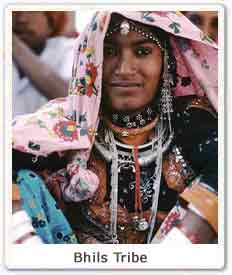Important Facts For Prelims
Mangarh Massacre
- 15 Nov 2022
- 5 min read
Why in News?
A horrifying tragedy occurred in Mangarh (Banswada, Rajasthan) killing more than 1,500 Bhil tribals on 17th November, 1913.
- The Mangrah hillock, situated at the Gujarat-Rajasthan border, is also known as the Adivasi Jallianwala.
What led to the Mangarh Massacre?
- The Bhils, a tribal community faced great troubles at the hands of the rulers of the princely states and the British.
- By the end of the 20th century, the Bhils living in Rajasthan and Gujarat became bonded labour.
- The great famine of 1899-1900 across the Deccan and Bombay Presidency, which killed over six lakh people, only made the situation worst for the Bhils.
- Mobilised and trained by social activist Guru Govindgiri, also known as Govind Guru, the Bhils placed a charter of 33 demands before the British by 1910 primarily relating to forced labour, high tax imposed on Bhils and harassment of the guru’s followers by the British and rulers of princely states.
- The Bhils rejected the British’s attempt to placate them and refused to leave Mangarh Hill, vowing to declare freedom from British rule.
- The British then asked the Bhils to leave Mangarh Hill before 15 November 1913.
- But that didn’t happen and on 17 November 1913, the British Indian Army fired indiscriminately on Bhil protesters and it is said that over 1,500 people, including women and children died in the tragedy.
Who was Govind Guru?
- Govind Guru was a revolutionary leader of the tribals of Mangarh that included present-day Udaipur, Dungarpur and Banswara in Rajasthan, Gujarat’s Idar and Malwa in Madhya Pradesh.
- Guru was a living legend among the Bhil and Garasiya tribal communities, a man who united thousands of tribals with his voice.
- Before Govind Guru became a leader in India’s freedom struggle, he played an important role in India’s renaissance movement.
- At the age of 25, he impressed Swami Dayanand Saraswati, a central figure of that movement in north India.
- He along with Swami Dayanand Saraswati initiated a wave of social reforms in the tribal areas.
- In 1903, Govind Guru pledged not to drink alcohol, shifting his focus to eradicating social evils, boycotting foreign goods, ending forced labour, educating girls, and resolving mutual disputes among tribes instead of taking them to the courts.
- This led to the creation of a Sump (Unity) Sabha, whose first meeting was held on the hilltop in Mangarh.
- This historical event solidified Mangarh’s significance in Indian history as it became central to the tribal movement in this area.
- Bhagat movement initiated in 1908 by Govind Guru where tribals gathered around the fire to reaffirm their oath was seen by the British as a threat.
- The consequence of the Mangarh massacre was cruel. Govind Guru was given a death sentence, and his wife was arrested.
- But fearing that the movement of tribal Bhils would turn violent, the British postponed his execution and sentenced him to 20 years of imprisonment on an isolated island.
- When he was released from jail, all the princely states came together to exile him.
- He lived his last years in Kamboi, Gujarat, where he died on October 30, 1931.
What is Bhil Tribe?
- About:
- Bhils are commonly referred to as Rajasthan's bowmen. They are India's most widely dispersed tribal communities.
- As per Census 2011, Bhils are India's largest tribe.
- They are broadly classified into two types:
- Central or Pure Bhils
- Eastern or Rajput Bhils.
- The central Bhils can be found in the mountain regions of Madhya Pradesh, Maharashtra, Gujarat, and Rajasthan in India, and also can be found in Tripura's northwestern regions.
- They are considered as Schedule Tribe in Andhra Pradesh, Chhattisgarh, Gujarat, Karnataka, Madhya Pradesh, Maharashtra, Rajasthan and Tripura.
- Historical Perspective:
- Bhils are members of the pre-Aryan race.
- The term 'Bhil' is derived from the word villu or billu, which is known as Bow in the Dravidian language.
- The name Bhil is also mentioned in the ancient epics of Mahabharata and Ramayana.







